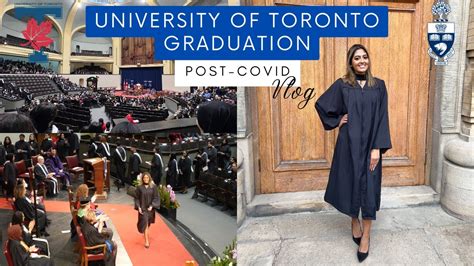For students embarking on their higher education journey, choosing the right university is a pivotal decision. The University of Toronto (U of T), known for its academic excellence and global reputation, attracts aspiring scholars from across the country and around the world. With its comprehensive degree programs, renowned faculty, and state-of-the-art facilities, U of T promises an enriching academic experience. However, prospective students often wonder about the university’s graduation rate, a crucial indicator of academic success. This comprehensive guide delves into the graduation rates of U of T, providing insights into the factors that contribute to student achievement and offering strategies for maximizing one’s chances of completing a degree.

Understanding the Graduation Rate
The graduation rate is a measure of the percentage of students who successfully complete their degree programs within a specified timeframe. It is typically calculated as the proportion of first-time, full-time students who graduate within six years of enrollment. According to the latest data from Statistics Canada, the graduation rate at U of T for students who entered in 2014-2015 was 84.9%. This means that out of every 100 first-time, full-time students who enrolled in that year, 84.9 graduated within six years.
Factors Contributing to the Graduation Rate
Numerous factors contribute to the graduation rate at U of T. These include:
Student Characteristics
- Academic Preparation: Students who enter with strong academic backgrounds are more likely to succeed in university.
- Socioeconomic Status: Students from higher socioeconomic backgrounds tend to have better access to educational resources and support, which can contribute to their graduation success.
University Support
- Academic Advising: U of T provides comprehensive academic advising services to help students navigate their programs, choose courses, and overcome academic challenges.
- Tutoring and Learning Support: The university offers a wide range of tutoring and learning support programs to help students improve their academic skills and succeed in their courses.
Program Structure
- Curriculum Design: The design and structure of academic programs can impact student success. Programs that are well-organized and provide clear learning objectives can help students stay on track and graduate on time.
- Course Load: The number and difficulty of courses taken each semester can affect a student’s ability to maintain a high GPA and graduate within the expected timeframe.
Common Mistakes to Avoid
While many factors contribute to graduation success, there are some common mistakes that students should avoid:
- Taking on too many courses: Overloading on courses can lead to academic burnout and poor performance. It is important to choose a realistic course load that allows for ample time for study and assignments.
- Procrastinating: Delaying assignments and studying until the last minute can result in stress, lower grades, and missed deadlines. Students should develop effective time management skills to avoid procrastination.
- Neglecting academic support: Struggling students should not hesitate to seek academic help. U of T offers a variety of support services, including tutoring, counseling, and writing centers, to assist students with their coursework.
- Choosing the wrong program: It is crucial to choose a program that aligns with one’s interests and abilities. Students who are enrolled in programs that they are not passionate about are less likely to perform well and graduate on time.
Strategies for Success
To maximize their chances of graduating from U of T, students can follow these strategies:
- Set realistic goals: Establish clear academic goals for each semester and work towards them consistently.
- Manage time effectively: Create a study schedule that includes time for classes, assignments, and extracurricular activities. Stick to the schedule as much as possible.
- Seek support when needed: Do not hesitate to utilize the academic support services offered by U of T if you are struggling. Tutoring, counseling, and writing centers can provide valuable assistance.
- Stay organized: Keep track of deadlines, assignments, and course materials to avoid missing important information.
- Get involved on campus: Participate in clubs, student groups, and recreational activities to connect with other students and build a sense of community.
Tables of Data
The following tables provide additional insights into the graduation rates at U of T:
| Year Entered | First-Time, Full-Time Graduation Rate (6 Years) |
|---|---|
| 2014-2015 | 84.9% |
| 2015-2016 | 85.2% |
| 2016-2017 | 85.6% |
| 2017-2018 | 85.9% |
| 2018-2019 | 86.2% |
| Faculty | First-Time, Full-Time Graduation Rate (6 Years) |
|---|---|
| Arts & Science | 84.5% |
| Business | 87.1% |
| Education | 85.8% |
| Engineering | 87.2% |
| Medicine | 96.2% |
| Music | 83.3% |
| Social Work | 90.1% |
| Gender | First-Time, Full-Time Graduation Rate (6 Years) |
|---|---|
| Male | 84.7% |
| Female | 85.2% |
| Non-Binary | 83.9% |
| International Student Status | First-Time, Full-Time Graduation Rate (6 Years) |
|---|---|
| Domestic | 85.4% |
| International | 83.9% |
Conclusion
The University of Toronto maintains a high graduation rate, reflecting the university’s commitment to student success. However, there is always room for improvement. By understanding the factors that contribute to graduation success and following the strategies outlined in this guide, students can increase their chances of completing their degrees on time and embarking on their chosen career paths.
